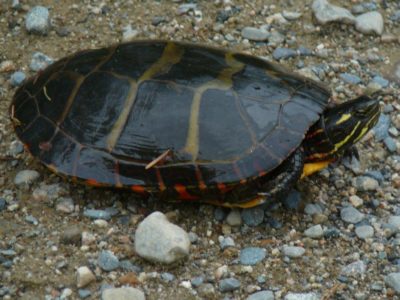Ahhh, a Place to Build Memories

From the South:
– From Bangor, Portland, and points south and east, travel on I-95 to Exit 133. Travel on US-201 N for approximately 25 miles.
From the North:
– From all locations in Quebec, travel on QC-173 S to the US/ Canada border crossing. The Byway begins at the border and extends 78 miles along US-201 S to Solon.
Travel Tips in the Maine Woods
Take some basic travel precautions to help ensure a safe and enjoyable trip:
- Cell phone service is unreliable in some spots on the Byway. It’s also spotty in the woods.
- Weather can change quickly – pack for the unexpected.
- Wear sturdy hiking shoes.
- Pack water and snacks.
- The Delorme Maine Atlas and Gazetteer is a worthwhile investment. It can be purchased locally in several places.
Bugs
The forest that provides great breeding habitat for so many birds also supplies them with an abundant food source: insects, particularly black flies, mosquitoes, and deer flies. Although the period when these pests are most bothersome is relatively short—usually from the second half of May through June—it is also the height of the breeding season when birds are their most conspicuous. Carrying repellant and wearing field clothes that allow you to cover up will make birding in the woods much more comfortable.
Moose
The chances of seeing these magnificent animals are fairly good. While this is great for wildlife-watching, it also presents potentially hazardous situations for motorists. Moose often come out onto roadways to seek respite from the biting insects, to take advantage of the easy travel corridors, or to lick road salt. At night, their dark coat and lack of reflective eyeshine render them almost invisible to the driver in a rapidly moving vehicle. The seriousness of a moose collision cannot be overstated. Be alert!
Logging Roads
Northern and Western Maine is crisscrossed by thousands of miles of private logging roads that permit public access to many remote and beautiful places. When traveling these gravel roads, it is vital to remember they were built for hauling logs. Normal rules of the road do not apply here. Logging trucks have the right of way at all times, and they are often heavily loaded and moving very fast. Move well to the side to allow them to pass and pull off the road completely when stopping. Motorcycles and bicycles are not permitted beyond the staffed checkpoint gates, even if they are just strapped to the outside of a vehicle. Services in Maine’s working forest are few and far between if available at all. Do not expect phone service. Signage along this road network has improved but is irregular and sometimes confusing. Maps and atlases are available at most checkpoints.